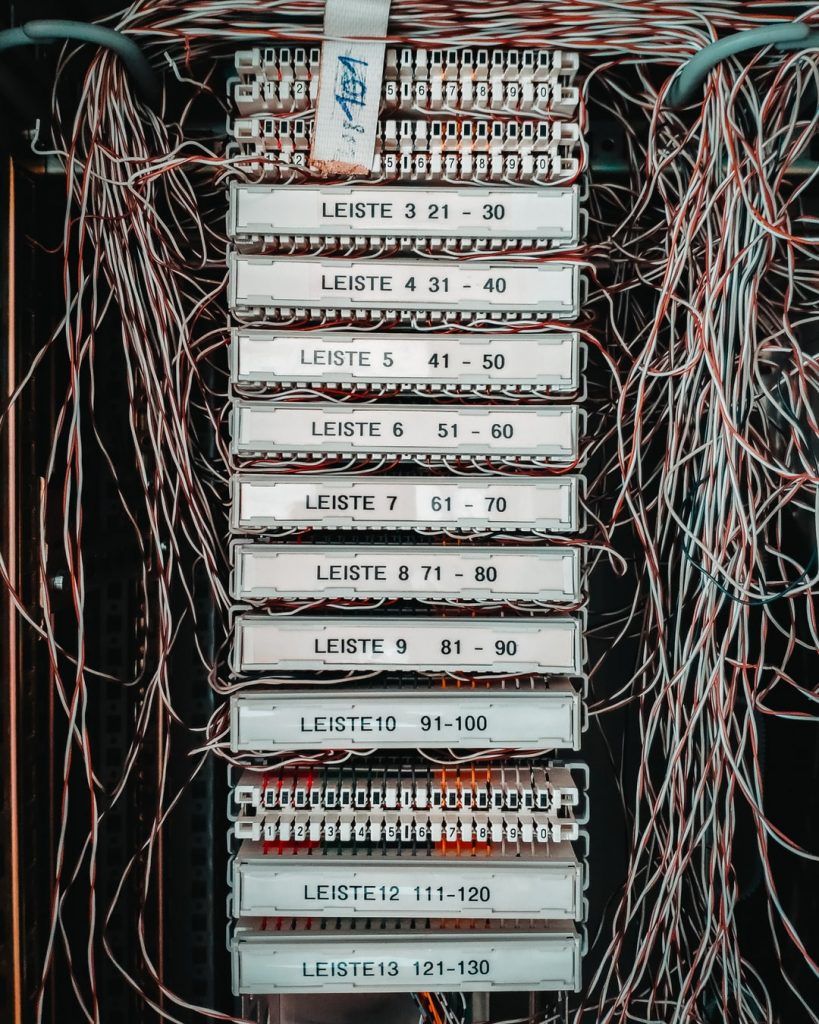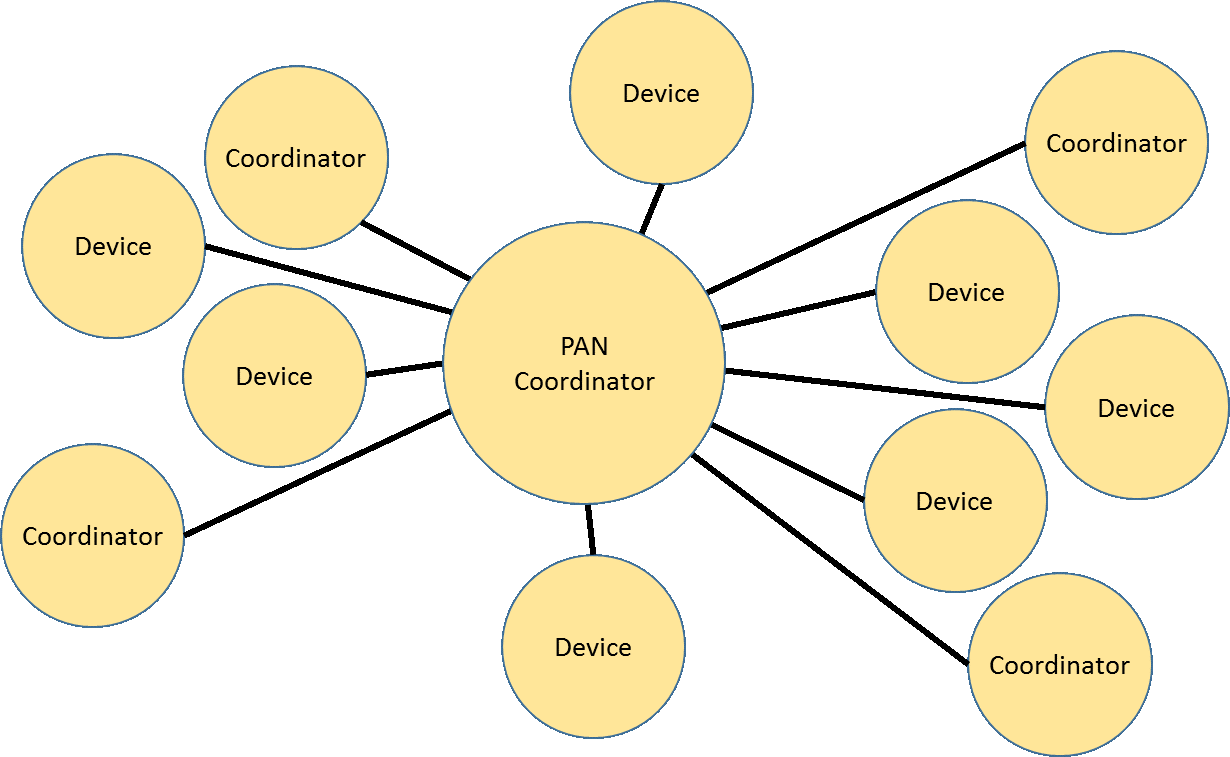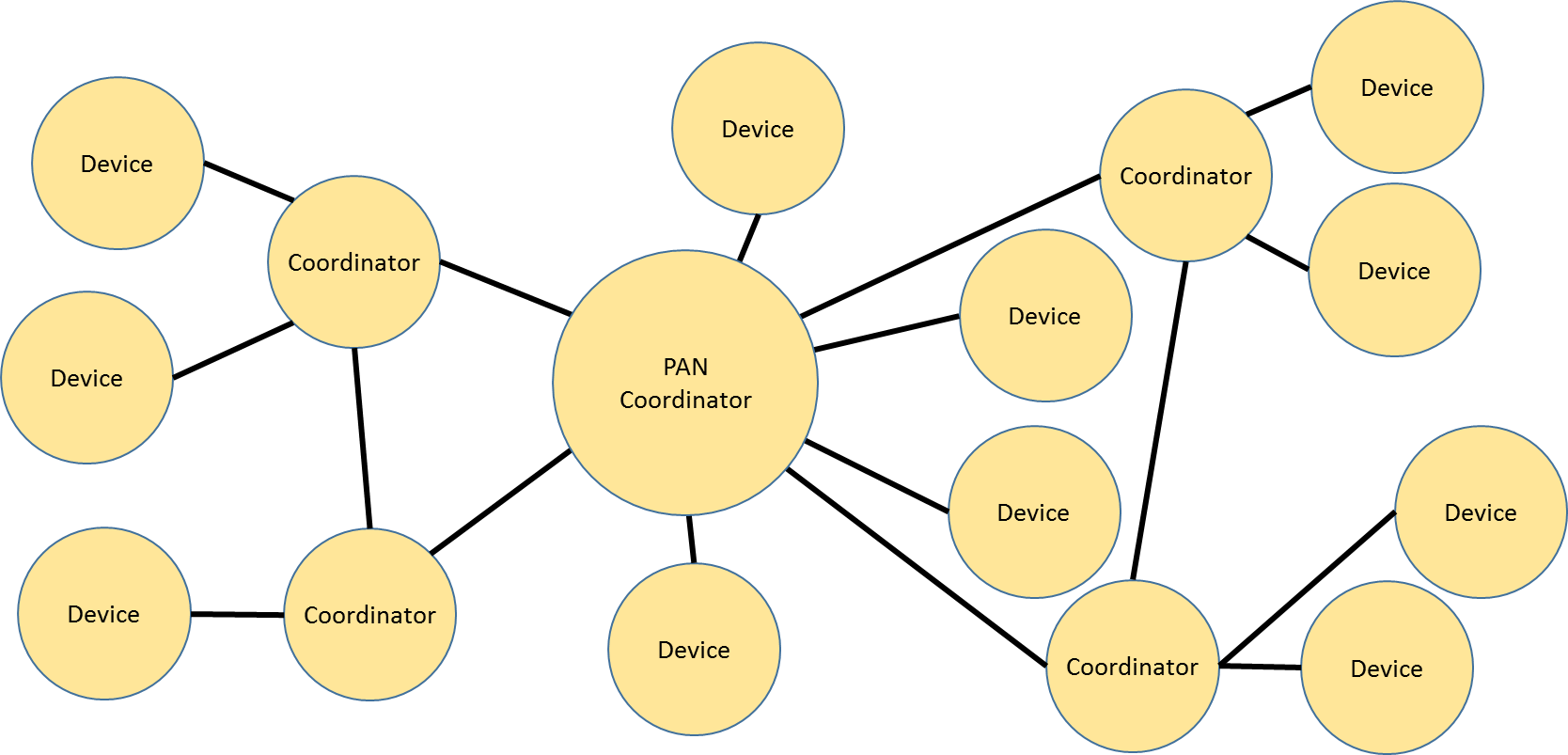
Part II: The Self-Organizing Network
In part I, we started exploring the features of 802.15.4 networks. In this post, we’ll explore the ways these devices organize themselves into networks.
The 802.15.4 standard describes three node types. Nodes are the Things that make up the Internet of Things. Nodes can arrange themselves into free-form mesh networks, or more rigidly structured star networks.
Node Types
The simplest of the nodes the Device Node. Devices, also called Reduced Feature Devices or RFD, have the fewest features. These nodes are designed to transmit infrequently and therefore consume the least amount of power. Devices connect to a single node, either a Coordinator or PAN Coordinator. Devices must be terminating nodes, regardless of network configuration, and never have responsibility to relay data from adjacent nodes. The Internet of Things (IoT) calls these edge devices.
Next are Coordinator Nodes, also called Full-Function Devices or FFD. They do everything that a Device Node does, except they can simultaneously connect to several Devices, Coordinators, or a PAN Coordinator. These nodes form the building blocks of self-forming mesh networks and may be responsible for relaying data from one or several adjacent nodes. These devices are also considered edge devices. If network beaconing is enabled, Coordinators can safely power down between data transmissions without losing messages, thus extending battery life.
Every network one PAN Coordinator. They do everything that the Coordinator Node does, with the added responsibility for managing the configuration and addressing of all the nodes on the network. Every network has one and only one PAN Coordinator. These nodes are frequent transmitters, so they are often mains powered instead of battery powered.
PAN Coordinators are often embedded into gateways. Gateways are used to forward data from edge devices into a larger data networks, or directly into the cloud. Gateways provide the link between the Things and the Internet. Gateways are normally mains powered and may utilize Wi-Fi®, cellular, or satellite communications.
The Star Network
In a star network, each node talks to the PAN Coordinator. The network may include Devices or Coordinators, each with a single connection to the PAN Coordinator. As nodes are added to the network, each must contact the PAN Coordinator for a network address and basic configuration. Nodes communicate only with the PAN Coordinator, never with other nodes.
Star networks cannot communicate with other star networks. A PAN Coordinator embedded in a gateway is necessary to enable a star network to pass data to the larger network, or to the cloud.

The Mesh Network
In a mesh network, (also called a tree, or a peer-to-peer network) nodes have more freedom to connect with each other. These networks form as nodes are added. Device Nodes can connect to Coordinators or directly to the PAN Coordinator. Coordinator Nodes can form multiple connections and may serve as data relays for adjacent nodes. Coordinator Nodes may provide multiple communications paths to the PAN Coordinator. They extend the physical area of the network, by relaying data (sometimes through multiple Coordinators) from Device Nodes, thus reducing the transmit power needed by any of those nodes.
Mesh networks can communicate with other mesh networks via connections between Coordinators. When this happens, the PAN Coordinators will negotiate and one of them will downgrade to a Coordinator Node. As with the star network, the PAN Coordinator may be embedded in a gateway.
